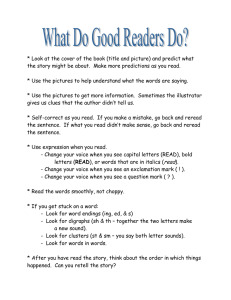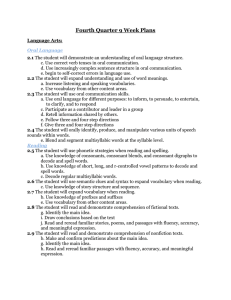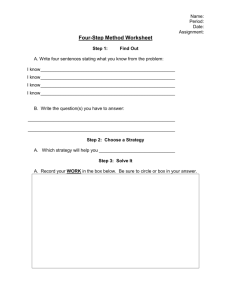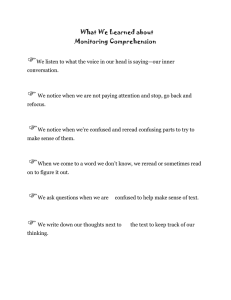4th Quarter Learning Targets for Second Grade Science
advertisement
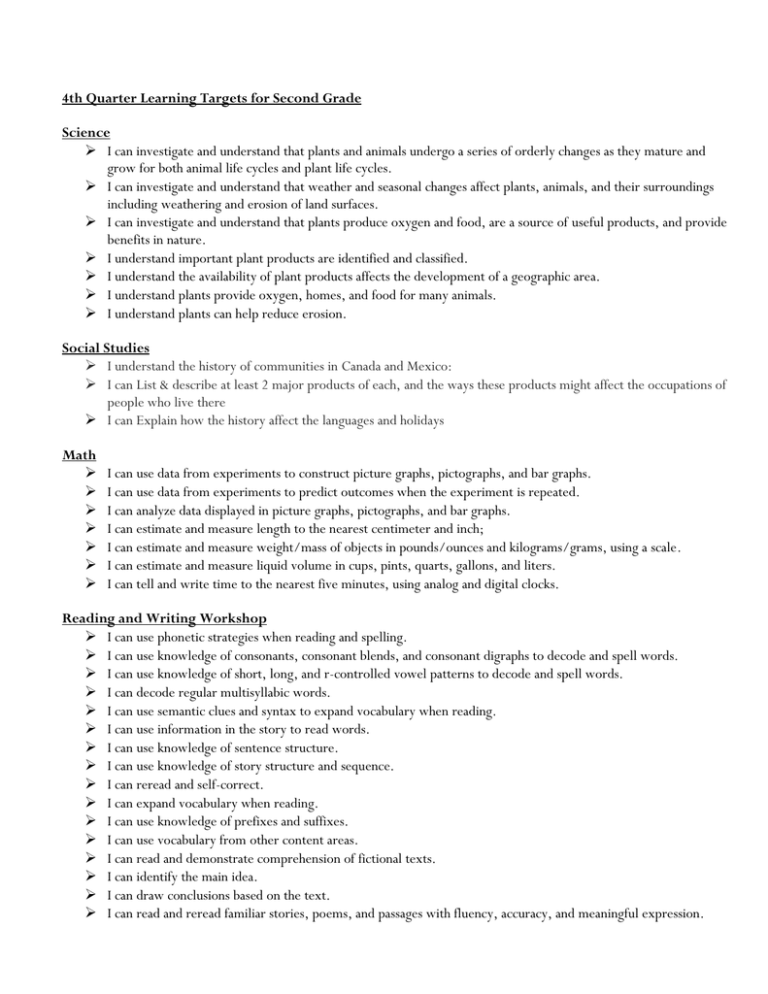
4th Quarter Learning Targets for Second Grade Science I can investigate and understand that plants and animals undergo a series of orderly changes as they mature and grow for both animal life cycles and plant life cycles. I can investigate and understand that weather and seasonal changes affect plants, animals, and their surroundings including weathering and erosion of land surfaces. I can investigate and understand that plants produce oxygen and food, are a source of useful products, and provide benefits in nature. I understand important plant products are identified and classified. I understand the availability of plant products affects the development of a geographic area. I understand plants provide oxygen, homes, and food for many animals. I understand plants can help reduce erosion. Social Studies I understand the history of communities in Canada and Mexico: I can List & describe at least 2 major products of each, and the ways these products might affect the occupations of people who live there I can Explain how the history affect the languages and holidays Math I can use data from experiments to construct picture graphs, pictographs, and bar graphs. I can use data from experiments to predict outcomes when the experiment is repeated. I can analyze data displayed in picture graphs, pictographs, and bar graphs. I can estimate and measure length to the nearest centimeter and inch; I can estimate and measure weight/mass of objects in pounds/ounces and kilograms/grams, using a scale. I can estimate and measure liquid volume in cups, pints, quarts, gallons, and liters. I can tell and write time to the nearest five minutes, using analog and digital clocks. Reading and Writing Workshop I can use phonetic strategies when reading and spelling. I can use knowledge of consonants, consonant blends, and consonant digraphs to decode and spell words. I can use knowledge of short, long, and r-controlled vowel patterns to decode and spell words. I can decode regular multisyllabic words. I can use semantic clues and syntax to expand vocabulary when reading. I can use information in the story to read words. I can use knowledge of sentence structure. I can use knowledge of story structure and sequence. I can reread and self-correct. I can expand vocabulary when reading. I can use knowledge of prefixes and suffixes. I can use vocabulary from other content areas. I can read and demonstrate comprehension of fictional texts. I can identify the main idea. I can draw conclusions based on the text. I can read and reread familiar stories, poems, and passages with fluency, accuracy, and meaningful expression. I can read and demonstrate comprehension of nonfiction texts. I can make and confirm predictions about the main idea. I can identify the main idea. I can read and reread familiar passages with fluency, accuracy, and meaningful expression. I can demonstrate comprehension of information in reference materials. I can use pictures, captions, and charts. I can use dictionaries, glossaries, and indices. I can maintain legible printing and begin to make the transition to cursive. I can write stories, letters, and simple explanations. I can generate ideas before writing. I can organize writing to include a beginning, middle, and end for narrative and expository writing. I can expand writing to include descriptive detail. I can revise writing for clarity. I can edit writing for correct grammar, capitalization, punctuation, and spelling. I can use correct spelling for commonly used sight words, including compound words and regular plurals. I can use verbs and adjectives correctly in sentences. I can use available technology for reading and writing. I can use correct verb tenses in oral communication. I can use increasingly complex sentence structures in oral communication. I can begin to self-correct errors in language use. I can increase listening and speaking vocabularies. I can use vocabulary from other content areas. I can use oral language for different purposes: to inform, to persuade, to entertain, to clarify, and to respond. I can participate as a contributor and leader in a group. I can retell information shared by others. I can follow three- and four-step directions. I can give three- and four-step directions. I can orally identify, produce, and manipulate various units of speech sounds within words. I can blend and segment multisyllabic words at the syllable level.
